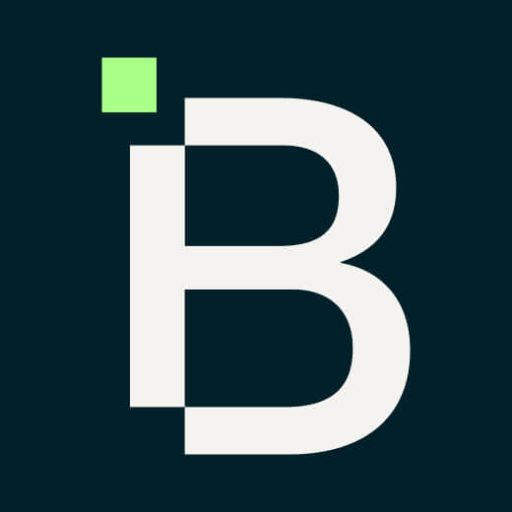To kick off our website development process, we host a website discovery workshop with the client to carefully consider their needs and determine steps for successful project completion. Read ahead to discover how we do it.
During the workshop, we strive to understand our client’s businesses and target audiences to create an innovative design that meets both their functional and long-term goals. We also define the scope of work, provide a detailed assessment of all project segments as well as outline specific functionality needs.
At the helm of each project, a team of our knowledgeable project managers and designers join forces with clients to deliver a fantastic workshop experience – plus, we have it all covered if the projects need additional support from our SEO expert & copywriters.
Depending on the project, other team members may also join the workshop, but it is essential that everyone there serves an important role in advancing this process and guiding it toward success.
Getting To Know The Client And Their Business
During the workshop, we draw on a set of pre-prepared questions. Our research ensures these questions align properly with the client’s business goals. Any unnecessary questions, or those the client already answered in a brief sent to us, will be removed. The workshop typically lasts between 6 and 8 hours.
Initially, we ask questions to understand what our client does and what products or services they offer. If it is something more complex than just sales, such as designing distribution cabinets, we will take some time to learn about their business first. With this knowledge in hand, we can create a design that will effectively meet all their targeted goals.
After hearing the client’s wishes and why they want a new web, we dive deep into their business and marketing goals to understand where they need better support.
We analyze what is working with their current web as well as detect areas that need improvement.
"It is essential for us to understand the client’s vision, how they want to position their brand on the market, and what impression their brand should make on the users."
All these help us craft a unique art direction that will translate into powerful design work.
Defining Target Groups — Who Is The Web Intender For?
One of the most important segments of the workshop is getting to know our client’s target audience and users. In this step, we try to understand their needs, and challenges, and how to navigate them to solve their needs or problems on the site as quickly as possible. We also define target personas, which we later use for User flow.
Brand And Content
After the first part of our workshop, we move on to discuss branding. If the client has defined brand guidelines and a brand strategy, that can simplify the process of creating art direction and web design that aligns with the company’s visual identity. If it is about an entirely new website that also has established branding, these guidelines provide us with an excellent foundation and help us prepare to continue the process.
One of the client’s main problems is usually the content on the current web. Often the web is cluttered with information, it does not communicate its products or services clearly enough, or it does not lead to conversions.
Our content team is dedicated to creating clear and concise communication, eliminating the clutter from the existing web.
By developing wireframes with these key guidelines in mind, we ensure a streamlined approach to website usability, which can lead to increased conversion rates.
Additionally, for those clients looking for an extra helping hand — our talented specialists can also provide visuals such as illustrations and images explicitly tailored according to the needs of each project.
Functionalities
The next segment defines all the necessary functionalities on the website, from the CMS to the blog, newsletter, and forms. When the functionalities are clearly defined, the development team can give a more precise assessment of the time needed and later plan and organize various elements of the website, contributing to a more efficient and faster web development process.
Employer branding
Our employer branding team is here to help with the process of creating a career site. They’ve got the right questions that assist in building a strong strategy and determining what sort of modules will be included.
The questions we ask our clients are:
- Do you have a defined employer branding strategy? What have you done in the employer branding area so far?
- Do you have an Employee Value Proposition, a text statement representing your employer brand, values, and benefits?
- What are the vision and mission of your brand? Do you want to highlight a specific value on your website?
- What do you think are the most important benefits of an ideal employer? Which of these does your company have? Is there a list of benefits you want to communicate?
- Do you have photo/video material that shows your company’s culture?
- What does the employment process look like? Do you use any platforms for this purpose?
- Do you have testimonials of your employees that you want to display on the website?
- Do you have a blog category on your website? Do your employees write blogs?
- When candidates enter the selection process, how correct is their perception of you as a company and employer? What is currently the biggest challenge for your brand in the labor market?
- Do you have open job positions? For which job positions do you find employees the easiest, and for which ones the most difficult?
Based on the answers, we create an employer branding strategy or propose an enhanced career page structure if the employer branding strategy is already in place.
An SEO strategy — Why Is It Important?
An important step when creating a new website or redesigning an existing one is to include SEO experts. Based on the purpose and type of site, these professionals will devise a tailored SEO strategy that includes both technical aspects and onsite elements as well as content creation to ensure optimum visibility in search engine results.
What is necessary to follow is the technical part of search engine optimization. With the help of various techniques and tools, we ensure that the new website structure is healthy and readable for web search engines and can be indexed without any problems.
Listed things include the definition and creation of a sitemap, implementation of Google Search Console and structured data (Schema Markup), site speed report, website audit, etc.

When redesigning existing websites that bring significant financial income to the client, it’s very important to preserve and maintain the level of visibility of the website so that the result itself would not be impaired. Here the planning of redirects and their implementation come into play. The purpose is to preserve the ranking and visibility of the website and to reduce the possibility of any errors that may distort the results.
SEO perspective gives essential information when defining website content. By researching what users search on web search engines, we can suggest changes in the website’s content, content structure, and semantic structure of the website to rank it for terms and keywords that benefit the client. Strategic positioning planning is one of the main elements for ultimate success in results.
Gathering all the information related to the terms listed above is a fundamental step in creating an SEO strategy. Once that is complete, it’s time to create a website, and the creation process has several quality assurance points with the development department.
Workshop Output
After the workshop ends, our client walks away with a comprehensive wrap-up of all the information discussed — from project goals and user requirements to deadlines and budgets. It’s an essential step towards making sure everyone remains on the same page. Our design and development crew will then take that information to give an accurate time frame for building out the project.
Following the workshop, content and SEO teams join forces with design to create a comprehensive site map and information architecture. With this input as guidance, designers create a user flow and low-fidelity wireframes.The building blocks of off-page SEO
Although our full-day workshop might sound exhausting, the payoff is worth it.
By working closely with our clients on their product expectations and objectives, we avoid any pesky miscommunications that slow down progress.
Clients know exactly what to expect from design and functionalities as well as understand timelines and deadlines. The result? A happy customer who knows exactly what’s coming soon: a tailored solution crafted just for them.
Need an experienced team to help you launch your new website or take part in a discovery workshop? Don’t hesitate – get in touch with us today.

